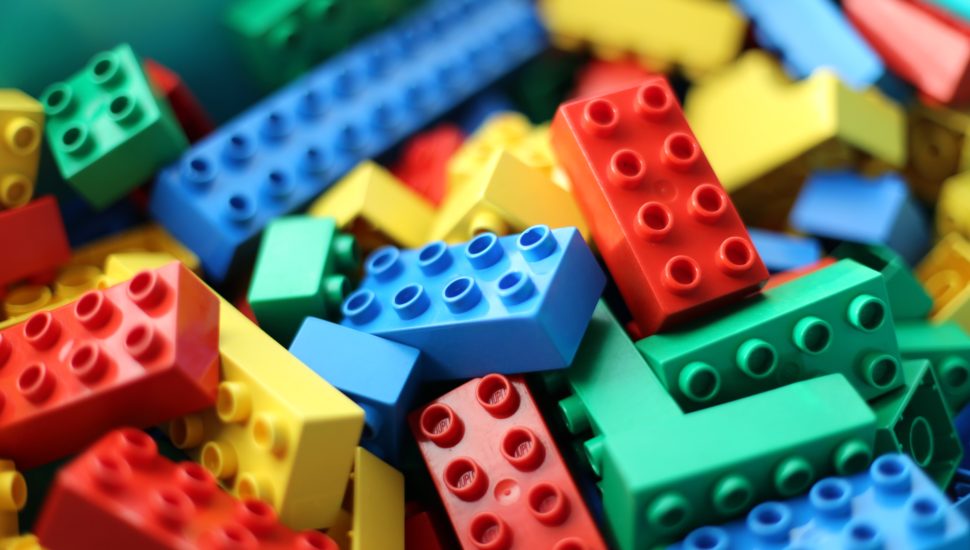The ultimate beginners guide to LEGO collecting

By Rachel Brown
Did you play with LEGOs when you were growing up? I always had a huge buckets of random bricks lying around my house and spent many rainy afternoons coming up with lopsided and structurally unsound buildings.
LEGOs are one of those things that—like jigsaw puzzles and board games—I still find relaxing and enjoyable as an adult. Over the past few years, I’ve bought and built multiple Star Wars-themed sets, and I’ve definitely got my eye on the Hogwarts Castle.
[uam_ad id=”54865″]
This guide is intended to introduce you to the ins and outs of LEGO collecting. I’ll cover some of the most popular collecting areas and provide tips for collecting as a family; discuss LEGO collecting as a viable investment strategy; and show you how to move beyond buying pre-assembled sets and into designing your very own creations.
But first, a short history lesson. LEGO has been around since 1949. The little plastic bricks are produced by the Lego Group, a company in Billund, Denmark. So, where did the idea for inventing LEGOs come from?
Danish carpenter Ole Kirk Christiansen (1891-1958) made wooden toys and household objects and in 1934, decided to name his company “Lego,” derived from the Danish phrase leg godt (“play well”).
Christiansen started working with plastic after WWII, and in 1949 first began producing interlocking plastic bricks made from cellulose acetate, the forerunners of today’s LEGOs.
It may surprise you to learn that his early plastic bricks were initially met with skepticism and hesitation from the general public. People really liked their traditional wooden toys and were slow to accept these newfangled plastic toys.
People collect LEGOs for all sorts of reasons, but mainly because…
- Playing with them is awesome! LEGOs are toys, after all, and they’re fun for kids (and kids at heart) of all ages.
- You can build cool centerpieces and decorative elements for your home. Completed LEGO sets are aesthetically pleasing, and I love having them out on display.
- LEGO can be combined with other hobbies and interests. For example, tons of people get into collecting LEGOs in the first place because they like Star Wars and enjoy putting together Star Wars-themed sets.
- They can make a wise investment. Some sets increase significantly in value over time, which makes LEGO an appealing brand for flippers and resellers.
Many LEGO sets are geared specifically to the tastes and capabilities of younger kids (8 and under). You can search by age category on the official LEGO website—some sets are even designed for children age 1 to 2!
Remember to supervise young kids while they play with their LEGOs—anything with small parts can unfortunately be a choking hazard for a curious toddler. But with some parental guidance, small kids can develop building skills and have a lot of fun with LEGO.
If you get into LEGO collecting with your children, it’s often a good idea to follow their lead a little. What interests them? Are they drawn to castles, superheroes, animals, or trains? When collecting as a family, it’s usually more rewarding to collect for personal enjoyment rather than for investment purposes.
LEGO sets come with age ranges printed clearly on the box, so it’s easy to choose age-appropriate sets for everyone in the family.
To continue this massive comprehensive guide on all things LEGO, including a detailed guide about investing in LEGO visit hobbyhelp.com/lego-collecting
[uam_ad id=”54875″]
Stay Connected, Stay Informed
Subscribe for great stories in your community!
"*" indicates required fields






![ForAll_Digital-Ad_Dan_1940x300[59]](https://montco.today/wp-content/uploads/sites/2/2022/06/ForAll_Digital-Ad_Dan_1940x30059.jpg)





























![95000-1023_ACJ_BannerAd[1]](https://montco.today/wp-content/uploads/sites/2/2023/03/95000-1023_ACJ_BannerAd1.jpg)






